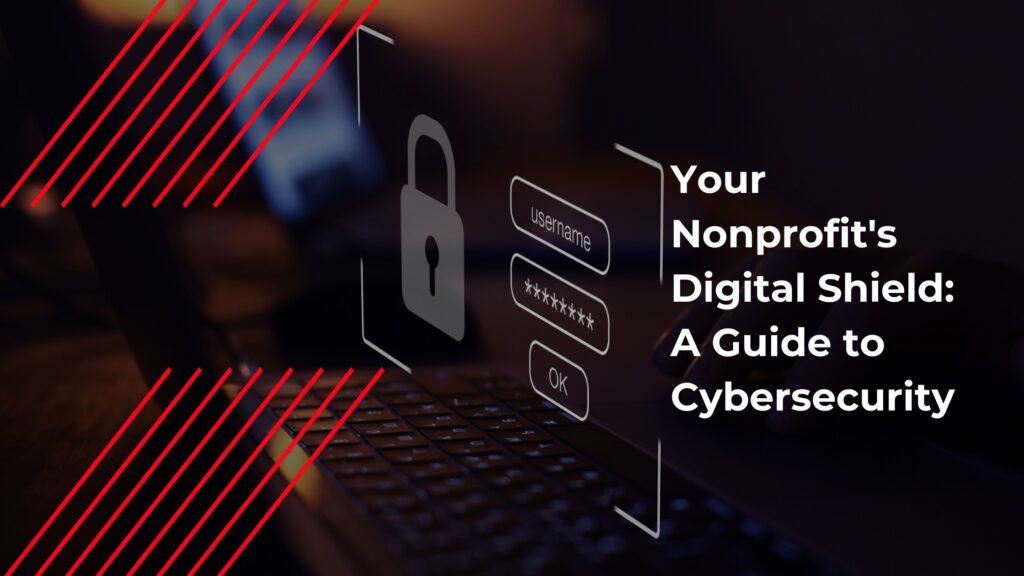In today’s interconnected world, where technology is woven into the fabric of every organization, nonprofits are no exception to the challenges posed by cyber threats. While your nonprofit tirelessly strives to make a positive impact on society, it’s crucial to recognize that the sensitive information you handle, from donor data to beneficiary records, is a potential target for cybercriminals. In this blog post, we’ll delve deeper into the realm of cybersecurity specifically tailored for nonprofits. We’ll explore the unique challenges you face and provide you with a comprehensive guide to bolstering your digital defenses, ensuring your organization’s mission remains secure.
Embracing the Digital Age: Unveiling Cybersecurity Challenges for Nonprofits
As a nonprofit, your core focus revolves around making the world a better place. Yet, beneath the surface of your noble endeavors lies the reality that you are entrusted with a wealth of sensitive data. This data includes personal information, financial records, and proprietary strategies, all of which can be exploited by cybercriminals. Here are some of the key cybersecurity challenges nonprofits often encounter:
Resource Constraints: Nonprofits are renowned for their resourcefulness, but budgets are frequently tight. Allocating funds for cybersecurity may not be a top priority, leaving you vulnerable to potential breaches.
Awareness Gap: With your attention fixed on your mission, cybersecurity might not be at the forefront of your thoughts. This can lead to complacency and a lack of awareness regarding evolving cyber threats.
Volunteer Dynamics: Nonprofits often rely on volunteers who come and go. This fluidity makes it challenging to maintain consistent cybersecurity practices and foster a culture of security.
Digital Transformation: Many nonprofits have embraced digital platforms for fundraising, communication, and data management. While this digital transformation offers efficiency, it also exposes you to a broader range of cyber risks.
A Holistic Approach to Nonprofit Cybersecurity
As a nonprofit organization dedicated to making a positive impact, you’re no stranger to the power of a comprehensive strategy. Just as you approach your mission with a holistic view, it’s equally important to take a well-rounded approach to cybersecurity. By addressing various aspects of cybersecurity, from education and protection to response and collaboration, you’ll be better equipped to navigate the digital landscape while safeguarding the invaluable assets that drive your organization’s mission forward. Let’s explore how each element contributes to a robust cybersecurity framework that ensures your nonprofit’s sustainability and success in the digital age.
1. Promote Cybersecurity Literacy: Begin by raising awareness within your organization about the importance of cybersecurity. Regularly conduct training sessions for both staff members and volunteers. Teach them to identify common threats like phishing scams and malicious downloads.
2. Fortify Data Protection: Take stock of the sensitive data your nonprofit handles. Implement strong data protection measures, such as encryption and secure storage, to safeguard this information. Regularly back up your data to prevent data loss.
3. Nurture Cyber Hygiene: Encourage your team to adopt good cyber hygiene practices. Emphasize the use of strong, unique passwords, and consider implementing multi-factor authentication (MFA) to add an extra layer of security.
4. Stay Current with Updates: Cybercriminals often exploit vulnerabilities in outdated software. Regularly update your operating systems, software, and applications to ensure you’re protected against known security flaws.
5. Vet Third-Party Vendors: If you collaborate with external vendors, such as fundraising platforms or software providers, ensure they prioritize cybersecurity. Verify that their practices align with your security standards to prevent potential breaches through third-party channels.
6. Plan for the Unexpected: Develop a comprehensive incident response plan that outlines the steps to take in case of a cyberattack. This plan will help you mitigate damage, minimize downtime, and facilitate a smoother recovery process.
7. Regular Security Audits: Conduct routine security audits to identify vulnerabilities in your systems. Address these weaknesses promptly to bolster your cybersecurity posture.
8. Secure Communication Channels: When sharing sensitive information, opt for encrypted communication channels to prevent unauthorized access to your conversations.
9. Incorporate Cybersecurity into Onboarding: Make cybersecurity training a part of your new employee and volunteer onboarding process. This instills a culture of security from day one and ensures that everyone is aligned with your organization’s cybersecurity practices.
10. Leverage Expertise: If cybersecurity isn’t your forte, consider collaborating with external experts or organizations specializing in nonprofit cybersecurity. They can provide guidance, perform assessments, and offer actionable recommendations.
Elevating Your Nonprofit’s Resilience
In the ever-evolving digital landscape, safeguarding your nonprofit’s mission requires a proactive approach to cybersecurity. By acknowledging the unique challenges your organization faces and implementing practical measures, you can create a robust cybersecurity foundation. Remember, cybersecurity isn’t just about protecting your data; it’s about preserving your donors’ trust and upholding the integrity of your mission. As you continue to inspire positive change, let cybersecurity be your steadfast companion, ensuring that your nonprofit’s impact on the world remains strong and secure.

